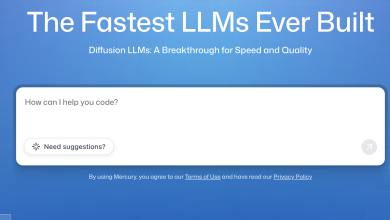
In 2025, the conversation around artificial intelligence has shifted. For enterprise leaders, the question is no longer whether to embrace AI — it’s how to do it in a way that delivers value without locking their organizations into inflexible systems or compromising data control.
At the recent AI Leadership Summit in London, that tension came into sharp focus. While AI models continue to evolve rapidly, speakers and panelists agreed: the real friction point is infrastructure. Legacy systems, siloed architectures, and closed vendor ecosystems are what’s slowing enterprise AI adoption — not the models themselves.
The infrastructure problem
Despite a record number of AI pilots underway, few are making it past proof of concept. The issue isn’t model quality — it’s the lack of fit.
Enterprises are struggling with
- Closed vendor ecosystems that restrict how tools and systems interoperate
- Terms of service changes (like Slack’s recent API update) that limit how companies can access and reuse their own data
- Lack of control over which models are used, how they’re governed, and where they’re deployed
- Rigid “AI-first” platforms that require teams to bend workflows to fit the tool, instead of the other way around
“You can build the best LLM in the world, but if your business users can’t connect it to the rest of your infrastructure, it’s not going anywhere,” one CIO noted during a breakout session.
Composable AI is gaining ground
In response, many enterprises are turning to composable AI — platforms and architectures that allow IT teams to mix and match models, data pipelines, knowledge layers, and deployment environments.
This approach isn’t just about flexibility. It’s becoming a procurement standard. CIOs increasingly expect to:
- Use both proprietary and open-source models
- Run workloads in cloud, on-prem, or sovereign environments
- Build governance into workflows from the start
“We’ve heard from CIOs globally — they’re no longer interested in black boxes,” said Tushar Shah, Chief Product Officer at Uniphore. “They’re asking for open, secure, modular systems they can control.”
Platforms like Uniphore’s Business AI Cloud were spotlighted during the summit as examples of this shift. Built to integrate with — rather than replace — enterprise infrastructure, it offers native interoperability, zero-copy data access, and model-agnostic orchestration across every deployment type.
The Sovereignty Imperativelayer
Another recurring theme: data control is quickly becoming a deciding factor in platform selection. Especially in Europe, concerns over data residency, regulatory compliance, and model transparency are pushing organisations toward sovereign deployments.
Speakers cited a shift away from generalised cloud-first tooling toward setups that allow teams to choose:
- Where data is stored and processed
- Which region-specific privacy rules apply
- What models are approved for which workflows
“The conversation’s moved on from ‘can this generate a response?’ to ‘can we trust the entire chain of how that response is created?’” said Saurabh Saxena, Head of Technology at Uniphore.
This thinking applies not only to data but also to deployment governance, with teams prioritising platforms that offer full observability, logging, and access control across all AI-driven processes.
A strategic decision for CIOs
CIOs are now being asked to choose: do they centralise AI within large closed ecosystems, or assemble a stack of tools that gives them flexibility and visibility?
It’s not an easy call. Large platforms like Salesforce, Google, and others offer strong interoperability within their own walls — but can be difficult to extend or customise beyond them. And while composable stacks promise more control, they often require a greater up-front investment in architecture and talent.
But the stakes are rising. As AI becomes more embedded in everything from operations to customer service to HR, the risk of being locked into one provider — or building around opaque decision-making — is becoming harder to ignore.
Looking ahead
The summit made one thing clear: the future of AI in enterprise won’t be defined by who has the most powerful model. It will be defined by who can integrate AI most effectively into their infrastructure — securely, flexibly, and with full organizational alignment.
Organisations that can integrate AI on their terms — across tools, teams, and geographies — will be in a stronger position to scale. Platforms like Uniphore’s are part of a growing shift away from AI that disrupts, toward AI that fits. And for enterprise CIOs, that could make all the difference.




